formerly eScholarship Editions


|
|
|
|
Your search for
'United States History' in subject
found 177 book(s). | Modify Search | Displaying 21 - 40 of 177 book(s) | |
| 21. | 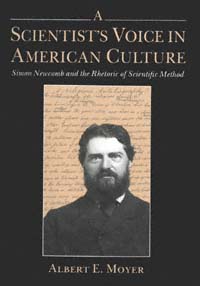 | Title: A scientist's voice in American culture: Simon Newcomb and the rhetoric of scientific method Author: Moyer, Albert E 1945- Published: University of California Press, 1992 Subjects: History | History and Philosophy of Science | United States History Publisher's Description: In late nineteenth-century America, Simon Newcomb was the nation's most celebrated scientist and - irascibly, doggedly, tirelessly - he made the most of it. Officially a mathematical astronomer heading a government agency, Newcomb spent as much of his life out of the observatory as in it, acting as a spokesman for the nascent but restive scientific community of his time.Newcomb saw the "scientific method" as a potential guide for all disciplines and a basis for all practical action, and argued passionately that it was of as much use in the halls of Congress as in the laboratory. In so doing, he not only sparked popular support for American science but also confronted a wide spectrum of social, cultural, and intellectual issues. This first full-length study of Newcomb traces the development of his faith in science and ranges over topics of great public debate in the Gilded Age, from the reform of economic theory to the recasting of the debate between science and religion. Moyer's portrait of a restless, eager mind also illuminates the bustle of late nineteenth-century America. [brief] Similar Items |
| 22. | 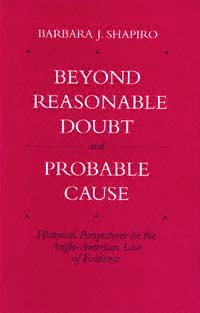 | Title: "Beyond reasonable doubt" and "probable cause": historical perspectives on the Anglo-American law of evidence Author: Shapiro, Barbara J Published: University of California Press, 1991 Subjects: History | European History | United States History | Rhetoric | Law Similar Items |
| 23. | 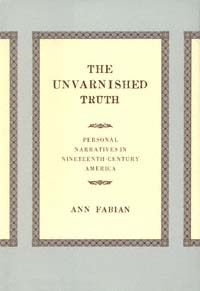 | Title: The unvarnished truth: personal narratives in nineteenth-century America Author: Fabian, Ann Published: University of California Press, 2000 Subjects: American Studies | United States History | American Literature Publisher's Description: The practice of selling one's tale of woe to make a buck has long been a part of American culture. The Unvarnished Truth: Personal Narratives in Nineteenth-Century America is a powerful cultural history of how ordinary Americans crafted and sold their stories of hardship and calamity during the nineteenth century. Ann Fabian examines the tales of beggars, convicts, ex-slaves, prisoners of the Confederacy, and others to explore cultural authority, truth-telling, and the nature of print media as the country was shifting to a market economy. This well-crafted book describes the fascinating controversies surrounding these little-read tales and returns them to the social worlds where they were produced.Drawing on an enormous number of personal narratives - accounts of mostly poor, suffering, and often uneducated Americans - The Unvarnished Truth analyzes a long-ignored tradition in popular literature. Historians have treated the spread of literacy and the growth of print culture as a chapter in the democratization of refinement, but these tales suggest that this was not always the case. Producing stories that purported to be the plain, unvarnished truth, poor men and women edged their way onto the cultural stage, using storytelling strategies far older than those relying on a Renaissance sense of refinement and polish. This book introduces a unique collection of tales to explore the nature of truth, authenticity, and representation. [brief] Similar Items |
| 24. | 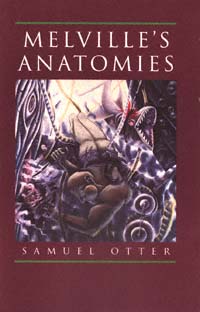 | Title: Melville's anatomies Author: Otter, Samuel 1956- Published: University of California Press, 1999 Subjects: American Studies | American Literature | United States History Publisher's Description: In fascinating new contextual readings of four of Herman Melville's novels - Typee , White-Jacket, Moby-Dick , and Pierre - Samuel Otter delves into Melville's exorbitant prose to show how he anatomizes ideology, making it palpable and strange. Otter portrays Melville as deeply concerned with issues of race, the body, gender, sentiment, and national identity. He articulates a range of contemporary texts (narratives of travelers, seamen, and slaves; racial and aesthetic treatises; fiction; poetry; and essays) in order to flesh out Melville's discursive world.Otter presents Melville's works as "inside narratives" offering material analyses of consciousness. Chapters center on the tattooed faces in Typee , the flogged bodies in White-Jacket , the scrutinized heads in Moby-Dick , and the desiring eyes and eloquent, constricted hearts of Pierre . Otter shows how Melville's books tell of the epic quest to know the secrets of the human body. Rather than dismiss contemporary beliefs about race, self, and nation, Melville inhabits them, acknowledging their appeal and examining their sway.Meticulously researched and brilliantly argued, this groundbreaking study links Melville's words to his world and presses the relations between discourse and ideology. It will deeply influence all future studies of Melville and his work. [brief] Similar Items |
| 25. | 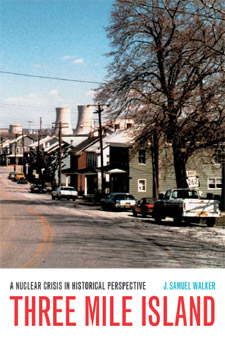 | Title: Three Mile Island: a nuclear crisis in historical perspective Author: Walker, J. Samuel Published: University of California Press, 2004 Subjects: History | Technology and Instruments | Environment | Technology and Society | United States History Publisher's Description: Twenty-five years ago, Hollywood released The China Syndrome, featuring Jane Fonda and Michael Douglas as a TVnews crew who witness what appears to be a serious accident at a nuclear power plant. In a spectacular coincidence, on March 28, 1979, less than two weeks after the movie came out, the worst accident in the history of commercial nuclear power in the United States occurred at Three Mile Island. For five days, the citizens of central Pennsylvania and the entire world, amid growing alarm, followed the efforts of authorities to prevent the crippled plant from spewing dangerous quantities of radiation into the environment. This book is the first comprehensive account of the causes, context, and consequences of the Three Mile Island crisis. In gripping prose, J. Samuel Walker captures the high human drama surrounding the accident, sets it in the context of the heated debate over nuclear power in the seventies, and analyzes the social, technical, and political issues it raised. His superb account of those frightening and confusing days will clear up misconceptions held to this day about Three Mile Island. The heart of Walker's suspenseful narrative is a moment-by-moment account of the accident itself, in which he brings to life the players who dealt with the emergency: the Nuclear Regulatory Commission, the state of Pennsylvania, the White House, and a cast of scientists and reporters. He also looks at the aftermath of the accident on the surrounding area, including studies of its long-term health effects on the population, providing a fascinating window onto the politics of nuclear power and an authoritative account of a critical event in recent American history. [brief] Similar Items |
| 26. | 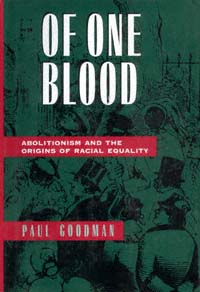 | Title: Of one blood: abolitionism and the origins of racial equality Author: Goodman, Paul 1934- Published: University of California Press, 1998 Subjects: History | United States History | American Studies Publisher's Description: The abolition movement is perhaps the most salient example of the struggle the United States has faced in its long and complex confrontation with the issue of race. In his final book, historian Paul Goodman, who died in 1995, presents a new and important interpretation of abolitionism. Goodman pays particular attention to the role that blacks played in the movement. In the half-century following the American Revolution, a sizable free black population emerged, the result of state-sponsored emancipation in the North and individual manumission in the slave states. At the same time, a white movement took shape, in the form of the American Colonization Society, that proposed to solve the slavery question by sending the emancipated blacks to Africa and making Liberia an American "colony." The resistance of northern free blacks was instrumental in exposing the racist ideology underlying colonization and inspiring early white abolitionists to attack slavery straight on. In a society suffused with racism, says Goodman, abolitionism stood apart by its embrace of racial equality as a Christian imperative.Goodman demonstrates that the abolitionist movement had a far broader social basis than was previously thought. Drawing on census and town records, his portraits of abolitionists reveal the many contributions of ordinary citizens, especially laborers and women long overshadowed by famous movement leaders. Paul Goodman's humane spirit informs these pages. His book is a scholarly legacy that will enrich the history of antebellum race and reform movements for years to come."[God] hath made of one blood all nations of men for to dwell on all the face of the earth." - Acts 17:26 [brief] Similar Items |
| 27. | 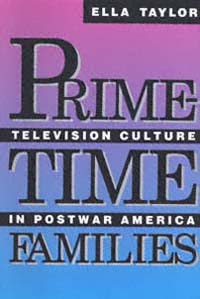 | Title: Prime-time families: television culture in postwar America Author: Taylor, Ella Published: University of California Press, 1989 Subjects: Sociology | United States History | Media Studies | Gender Studies | Television and Radio Similar Items |
| 28. | 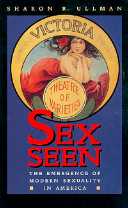 | Title: Sex seen: the emergence of modern sexuality in America Author: Ullman, Sharon R 1955- Published: University of California Press, 1998 Subjects: History | Gender Studies | United States History Publisher's Description: Sex Seen provides a complex and intriguing account of the changes that have taken place in the social construction of sexuality during the past century. Focusing on Sacramento, California, at the dawn of the twentieth century, Sharon Ullman juxtaposes early cinema, vaudeville performances, and popular newspapers and magazines with insights drawn from close interpretations of transcripts from Sacramento court cases. She demonstrates how attitudes that emerged in the popular discourse - ideas about gender roles, female desire, prostitution, divorce, and homosexuality - often found complex and contradictory expression in the courts. As judges, prosecutors, defense attorneys, and juries all weighed in with differing opinions, the courtroom itself became a site of multiple discourses that attempted to make sense of a growing sexual chaos. In tracing the birth of modern sexuality, Ullman chronicles the dynamics of social change during a unique cultural moment and explains the shifts in the sexual ethos of turn-of-the-century America. Instead of telling the familiar story of steadily increasing liberation of sexual urges, Ullman chronicles the complex confusions and negotiations of an increasingly public sexual discourse. She relates how laws against cross-dressing gained force at the same time that female impersonation became popular in vaudeville acts, how images of prostitutes were changed by the commercialization of the female body in advertising and film, and how visible expression of female desire was submerged in rape and divorce proceedings. Ullman blends social history, textual analysis, and film and performance criticism to explain how sexuality and desire became an essential part of personal identity in this century. Her keen, accessible account of a community on the brink of the modern era offers a provocative interpretation of the seeds of our sexual present. [brief] Similar Items |
| 29. | 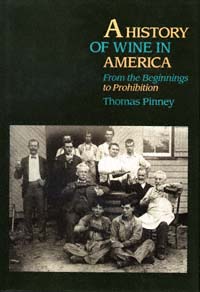 | Title: A history of wine in America from the beginnings to prohibition Author: Pinney, Thomas Published: University of California Press, 1989 Subjects: Food and Cooking | United States History | American Studies | Wine Publisher's Description: The Vikings called North America "Vinland," the land of wine. Giovanni de Verrazzano, the Italian explorer who first described the grapes of the New World, was sure that "they would yield excellent wines." And when the English settlers found grapes growing so thickly that they covered the ground down to the very seashore, they concluded that "in all the world the like abundance is not to be found." Thus, from the very beginning the promise of America was, in part, the alluring promise of wine. How that promise was repeatedly baffled, how its realization was gradually begun, and how at last it has been triumphantly fulfilled is the story told in this book.It is a story that touches on nearly every section of the United States and includes the whole range of American society from the founders to the latest immigrants. Germans in Pennsylvania, Swiss in Georgia, Minorcans in Florida, Italians in Arkansas, French in Kansas, Chinese in California - all contributed to the domestication of Bacchus in the New World. So too did innumerable individuals, institutions, and organizations. Prominent politicians, obscure farmers, eager amateurs, sober scientists: these and all the other kinds and conditions of American men and women figure in the story. The history of wine in America is, in many ways, the history of American origins and of American enterprise in microcosm.While much of that history has been lost to sight, especially after Prohibition, the recovery of the record has been the goal of many investigators over the years, and the results are here brought together for the first time. [brief] Similar Items |
| 30. | 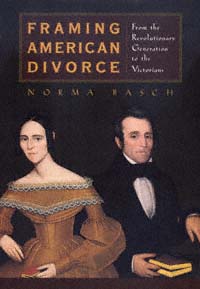 | Title: Framing American divorce: from the revolutionary generation to the Victorians Author: Basch, Norma Published: University of California Press, 1999 Subjects: History | Law | United States History | Gender Studies | Victorian History Publisher's Description: Divorce has become one of the most widely discussed issues in America. In this innovative exploration of the phenomenon of divorce in American society, Norma Basch uses a variety of analytic perspectives to enrich our understanding of the meaning of divorce during the formative years of both the nation and its law, roughly 1770 to 1870. She provides a fascinating, thoughtful look at divorce as a legal action, as an individual experience, and as a cultural symbol in its era of institutionalization and traces the powerful legacy of the first American divorce experiences for us today.Using a unique methodology, Basch fragments her story into three discrete but chronologically overlapping perspectives. In Part I, "Rules," she analyzes the changing legal and legislative aspects of divorce and the public response to them. Part II, "Mediations," focuses on individual cases and presents a close-up analysis of the way ordinary women and men tested the law in the courts. And Part III, "Representations," charts the spiraling imagery of divorce through various fiction and non-fiction narratives that made their way into American popular culture during the nineteenth century.The composite picture that emerges in Framing American Divorce is a vividly untidy one that exposes the gulf between legal and moral abstractions and everyday practices. Divorce, Basch argues, was always a focal point of conflict between the autonomy of women and the authority of men. Tracing the legal, social, and cultural experience of divorce allows Basch to provide a searching exploration of the limits of nineteenth-century ideals of domesticity, romantic love, and marriage, and their legacy for us today. She brings her findings up-to-date with a provocative discussion of the current debate over fault or no-fault divorce. [brief] Similar Items |
| 31. | 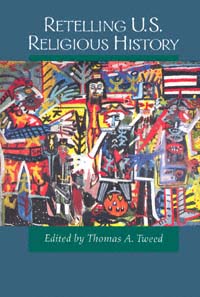 | Title: Retelling U.S. religious history Author: Tweed, Thomas A Published: University of California Press, 1997 Subjects: Religion | United States History | Asian Studies | American Studies | Comparative Religions Publisher's Description: This collection marks a turning point in the study of the history of American religions. In challenging the dominant paradigm, Thomas A. Tweed and his coauthors propose nothing less than a reshaping of the way that American religious history is understood, studied, and taught.The range of these essays is extraordinary. They analyze sexual pleasure, colonization, gender, and interreligious exchange. The narrators position themselves in a number of geographical sites, including the Canadian border, the American West, and the Deep South. And they discuss a wide range of groups, from Pueblo Indians and Russian Orthodox to Japanese Buddhists and Southern Baptists. [brief] Similar Items |
| 32. | 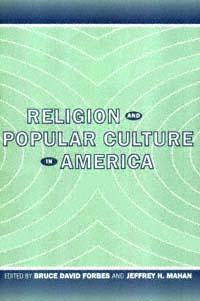 | Title: Religion and popular culture in America Author: Forbes, Bruce David Published: University of California Press, 2000 Subjects: Religion | Popular Culture | United States History Publisher's Description: The connections between American popular culture and religion is the subject of this multifaceted and innovative collection. Ranging from religious themes in cowboy fiction to Madonna's "Like a Prayer," from televangelism to the world of sports, the book's contributors offer fascinating insights into what popular culture reveals about the nature of American religion today. Bruce David Forbes provides an introductory essay that states the book's organizing principles. The first group of essays examines the appearance of explicit religious content or implicit religious themes in popular culture, focusing on such particulars as Christmas television specials and the fiction of Louis L'Amour and Cormac McCarthy. The second group of essays considers ways that popular culture influences traditional religions, especially evangelical Christianity. A third group illustrates how aspects of popular culture develop their own myths, symbol systems, and ritual patterns; included are discussions of Star Trek fandom, women's weight loss rituals, and sports. The fourth group offers examples of ways that religion and popular culture might critique each another: the disguise of vengeance in Pale Rider , rap music's take on African-American Christian theology, and a Christian feminist perspective on the role of gender in cyberspace. Jeffrey H. Mahan's concluding essay looks at the academic and general audiences engaged in discussions of social and cultural reform. [brief] Similar Items |
| 33. | 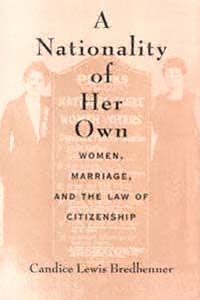 | Title: A nationality of her own: women, marriage, and the law of citizenship Author: Bredbenner, Candice Lewis 1955- Published: University of California Press, 1998 Subjects: History | United States History | Women's Studies | Law | Public Policy Publisher's Description: In 1907, the federal government declared that any American woman marrying a foreigner had to assume the nationality of her husband, and thereby denationalized thousands of American women. This highly original study follows the dramatic variations in women's nationality rights, citizenship law, and immigration policy in the United States during the late Progressive and interwar years, placing the history and impact of "derivative citizenship" within the broad context of the women's suffrage movement. Making impressive use of primary sources, and utilizing original documents from many leading women's reform organizations, government agencies, Congressional hearings, and federal litigation involving women's naturalization and expatriation, Candice Bredbenner provides a refreshing contemporary feminist perspective on key historical, political, and legal debates relating to citizenship, nationality, political empowerment, and their implications for women's legal status in the United States. This fascinating and well-constructed account contributes profoundly to an important but little-understood aspect of the women's rights movement in twentieth-century America. [brief] Similar Items |
| 34. | 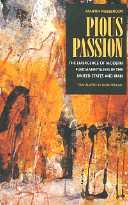 | Title: Pious passion: the emergence of modern fundamentalism in the United States and Iran Author: Riesebrodt, Martin Published: University of California Press, 1993 Subjects: Religion | Sociology | Social Theory | Middle Eastern Studies | American Studies | United States History Publisher's Description: Martin Riesebrodt's unconventional study provides an extraordinary look at religious fundamentalism. Comparing two seemingly disparate movements - in early twentieth-century United States and 1960s and 1970s Iran - he examines why these movements arose and developed. He sees them not simply as protests against "modernity" per se, but as a social and moral community's mobilization against its own marginalization and threats to its way of life. These movements protested against the hallmarks of industrialization and sought to transmit conservative cultural models to the next generation.Fundamentalists desired a return to an "authentic" social order governed by God's law, one bound by patriarchal structures of authority and morality. Both movements advocated a strict gender dualism and were preoccupied with controlling the female body, which was viewed as the major threat to public morality. [brief] Similar Items |
| 35. | 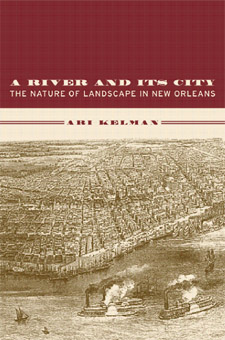 | Title: A river and its city: the nature of landscape in New Orleans Author: Kelman, Ari 1968- Published: University of California Press, 2003 Subjects: History | United States History | Environmental Studies | Technology and Society Publisher's Description: This engaging environmental history explores the rise, fall, and rebirth of one of the nation's most important urban public landscapes, and more significantly, the role public spaces play in shaping people's relationships with the natural world. Ari Kelman focuses on the battles fought over New Orleans's waterfront, examining the link between a river and its city and tracking the conflict between public and private control of the river. He describes the impact of floods, disease, and changing technologies on New Orleans's interactions with the Mississippi. Considering how the city grew distant - culturally and spatially - from the river, this book argues that urban areas provide a rich source for understanding people's connections with nature, and in turn, nature's impact on human history. [brief] Similar Items |
| 36. | 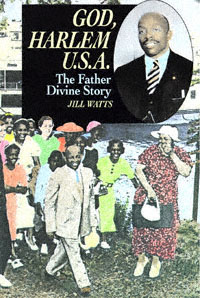 | Title: God, Harlem U.S.A.: the Father Divine story Author: Watts, Jill Published: University of California Press, 1992 Subjects: History | United States History | Christianity | American Studies | African American Studies | African Studies Publisher's Description: How did an African-American man born in a ghetto in 1879 rise to such religious prominence that his followers addressed letters to him simply "God, Harlem U.S.A."?Using hitherto unknown materials, Jill Watts portrays the life and career of one of the twentieth century's most intriguing religious leaders, Father Divine. Starting as an itinerant preacher, Father Divine built an unprecedented movement that by the 1930s had attracted followers across the nation and around the world. As his ministry grew, so did the controversy surrounding his enormous wealth, flamboyant style, and committed "angels" - black and white, rich and poor alike.Here for the first time a full account of Father Divine's childhood and early years challenges previous contentions that he was born into a sharecropping family in the deep South. While earlier biographers have concentrated on Father Divine's social and economic programs, Watts focuses on his theology, which gives new meaning to secular activities that often appeared contradictory. Although much has been written about Father Divine, God, Harlem U.S.A . finally provides a balanced and intimate account of his life's work. [brief] Similar Items |
| 37. | 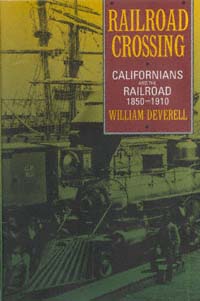 | Title: Railroad crossing: Californians and the railroad, 1850-1910 Author: Deverell, William Francis Published: University of California Press, 1994 Subjects: History | California and the West | United States History | Californian and Western History Publisher's Description: Nothing so changed nineteenth-century America as did the railroad. Growing up together, the iron horse and the young nation developed a fast friendship. Railroad Crossing is the story of what happened to that friendship, particularly in California, and it illuminates the chaos that was industrial America from the middle of the nineteenth century through the first decade of the twentieth.Americans clamored for the progress and prosperity that railroads would surely bring, and no railroad was more crucial for California than the transcontinental line linking East to West. With Gold Rush prosperity fading, Californians looked to the railroad as the state's new savior. But social upheaval and economic disruption came down the tracks along with growth and opportunity.Analyzing the changes wrought by the railroad, William Deverell reveals the contradictory roles that technology and industrial capitalism played in the lives of Americans. That contrast was especially apparent in California, where the gigantic corporate "Octopus" - the Southern Pacific Railroad - held near-monopoly status. The state's largest employer and biggest corporation, the S.P. was a key provider of jobs and transportation - and wielder of tremendous political and financial clout.Deverell's lively study is peopled by a rich and disparate cast: railroad barons, newspaper editors, novelists, union activists, feminists, farmers, and the railroad workers themselves. Together, their lives reflect the many tensions - political, social, and economic - that accompanied the industrial transition of turn-of-the-century America. [brief] Similar Items |
| 38. | 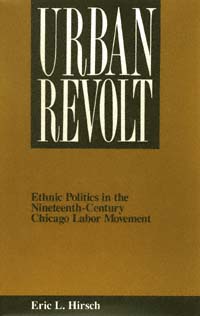 | Title: Urban revolt: ethnic politics in the nineteenth-century Chicago labor movement Author: Hirsch, Eric L 1952- Published: University of California Press, 1990 Subjects: History | United States History | Urban Studies Publisher's Description: Urban Revolt is a careful, incisive reexamination of the most highly mobilized urban revolutionary force in American history - the late nineteenth-century Chicago labor movement. By documenting the importance of ethnic origins in accounting for political choice, Eric L. Hirsch completely reconceptualizes the dynamics of urban social movements.Hirsch links the industrialization of Chicago to the development and maintenance of an ethnically segmented labor market. Urbanization, he argues, fostered ethnic enclaves whose inhabitants were channeled into particular kinds of jobs and excluded from others. Hirsch then demonstrates the political implications of emergent ethnic identities and communities.In the late nineteenth century, Chicagoans of German background - denied economic power by Anglo-Americans' control of craft unions and excluded from political influence by Irish-dominated political machines - formulated radical critiques of the status quo and devised innovative political strategies. In contrast, the Irish revolutionary movement in Chicago targeted the oppressive British political system; Irish activists saw no reason to overthrow a Chicago polity that brought them political and economic upward mobility. Urban Revolt gives a new perspective on revolutionary mobilization by de-emphasizing the importance of class consciousness, social disorganization, and bureaucracy. In his original and provocative focus on the importance of ethnicity in accounting for political choice, Hirsch makes a valuable contribution to the study of social movements, race, and working-class politics. [brief] Similar Items |
| 39. | 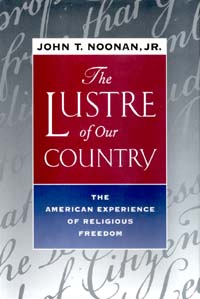 | Title: The lustre of our country: the American experience of religious freedom Author: Noonan, John Thomas 1926- Published: University of California Press, 1998 Subjects: Law | United States History | Religion | American Studies | Politics Publisher's Description: A New York Times Notable Book This remarkable work offers a fresh approach to a freedom that is often taken for granted in the United States, yet is one of the strongest and proudest elements of American culture: religious freedom. In this compellingly written, distinctively personal book, Judge John T. Noonan asserts that freedom of religion, as James Madison conceived it, is an American invention previously unknown to any nation on earth. The Lustre of Our Country demonstrates how the idea of religious liberty is central to the American experience and to American influence around the world.Noonan's original book is a history of the idea of religious liberty and its relationship with the law. He begins with an intellectual autobiography, describing his own religious and legal training. After setting the stage with autobiography, Noonan turns to history, with each chapter written in a new voice. One chapter takes the form of a catechism (questions and answers), presenting the history of the idea of religious freedom in Christianity and the American colonies. Another chapter on James Madison argues that Madison's support of religious freedom was not purely secular but rather the outcome of his own religious beliefs. A fictional sister of Alexis de Toqueville writes, contrary to her brother's work, that the U.S. government is very closely tied to religion. Other chapters offer straightforward considerations of constitutional law.Throughout the book, Noonan shows how the free exercise of religion led to profound changes in American law - he discusses abolition, temperance, and civil rights - and how the legal notion of religious liberty influenced revolutionary France, Japan, and Russia, as well as the Catholic Church during Vatican II. The Lustre of Our Country is a celebration of religious freedom - a personal and profound statement on what the author considers America's greatest moral contribution to the world. [brief] Similar Items |
| 40. | 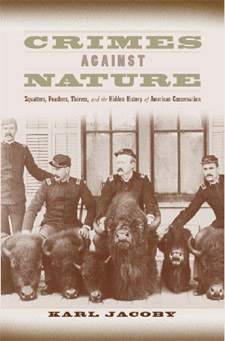 | Title: Crimes against nature: squatters, poachers, thieves, and the hidden history of American conservation Author: Jacoby, Karl 1965- Published: University of California Press, 2001 Subjects: History | United States History | Natural History Publisher's Description: Crimes against Nature reveals the hidden history behind three of the nation's first parklands: the Adirondacks, Yellowstone, and the Grand Canyon. Focusing on the impact that conservation in these areas had on rural people, Karl Jacoby traces the effect of criminalizing such traditional practices as hunting and fishing, foraging, and timber cutting in these newly created parks. Jacoby reassesses the nature of these "crimes" and provides a rich portrait of rural people and their relationship with the natural world in the late nineteenth and early twentieth centuries. This engagingly written study demonstrates the important ways in which class has influenced environmental history. [brief] Similar Items |